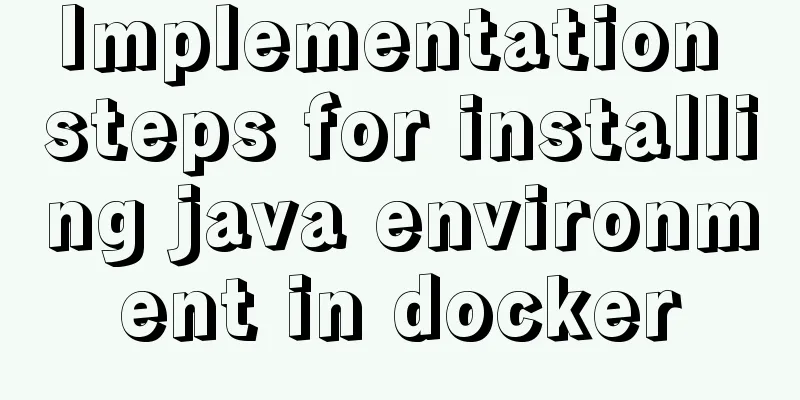Detailed explanation of how Nginx solves the problem of cross-domain access to front-end resources

|
After being tortured by the front-end cross-domain problem for almost 2 days, I finally solved it using ngnx, so I will summarize it here. This article only discusses how to use Ngnx to solve cross-domain problems, and does not discuss the principles. 1. First, introduce the relevant command operations of Nignx in Windows environment Common nginx commands:
After stopping nginx, nginx.pid in the /logs directory will be automatically deleted
Check whether the nignx listening port is started successfully
Solution: The port is still listening after closing nignx 1. netstat -ano | findstr port number#Get PID 2. tasklist | findstr "PID" #command to find nginx process information 3. taskkill /f /t /im nginx.exe #End the nginx process 2. Introduce how to configure Nignx to solve cross-domain problems Front-end IP port number: http://localhost:8080/ Backend IP port number: http://localhost:8082/ Now when we do not set up cross-domain, the front-end request is as follows uni.request({
url:'http://localhost:8082/ApiController/test',
success:(res)=>{
console.log(res.data)
},
})Access address: 'http://localhost:8082/ApiController/test', it will appear
Then we configure Nignx Edit /config/nginx.conf this file 1) Add header information and add cross-domain access configuration in the http block of the nginx.conf configuration file add_header Access-Control-Allow-Origin *; //Allow all domain names to access the proxy address across domains add_header Access-Control-Allow-Headers X-Requested-With; add_header Access-Control-Allow-Methods GET; //Cross-domain request access request method, 2) Set up a reverse proxy server {
listen 80; #Configure nignx's listening port server_name localhost; #Configure nignx's listening address location /ApiController{ #Listening address starts with /ApiController proxy_pass http://localhost:8082; #Forwarding address}
}After configuration, our front-end access url http://localhost:8082/ApiController/test should be changed to http://localhost:80/ApiController/test #Monitoring at this time Use localhost as the domain name Use port 80 The address starts with /ApiController Address forwarding will be performed uni.request({
url:'http://localhost:80/ApiController/test',
success:(res)=>{
console.log(res.data)
},
})Result: (Access successful)
Summarize This is the end of this article about how Nginx solves the problem of cross-domain access to front-end resources. For more relevant content about how Nginx solves the problem of cross-domain access to front-end resources, please search for previous articles on 123WORDPRESS.COM or continue to browse the following related articles. I hope you will support 123WORDPRESS.COM in the future! You may also be interested in:
|
<<: HTML line spacing setting methods and problems
>>: MySQL lock control concurrency method
Recommend
Linux system to view CPU, machine model, memory and other information
During system maintenance, you may need to check ...
A thorough understanding of js native syntax prototype, __proto__ and constructor
Table of contents 1 Introduction 2 Prerequisites ...
Detailed explanation of top command output in Linux
Preface I believe everyone has used the top comma...
Detailed explanation of a method to rename procedure in MYSQL
Recently I have used the function of renaming sto...
MySQL FAQ series: When to use temporary tables
Introduction to temporary tables What is a tempor...
JavaScript to implement drop-down list selection box
This article example shares the specific code of ...
Summary of CSS3 practical methods (recommended)
1. Rounded border: CSS CodeCopy content to clipbo...
HTML scroll bar textarea attribute setting
1. Overflow content overflow settings (set whether...
Are you still Select *?
There are many reasons why an application is as s...
IIS7~IIS8.5 delete or modify the server protocol header Server
Requirements: Remove HTTP response headers in IIS...
Some parameter descriptions of text input boxes in web design
In general guestbooks, forums and other places, t...
Don’t bother with JavaScript if you can do it with CSS
Preface Any application that can be written in Ja...
W3C Tutorial (15): W3C SMIL Activities
SMIL adds support for timing and media synchroniz...
How to Learn Algorithmic Complexity with JavaScript
Table of contents Overview What is Big O notation...
MySQL 5.7.27 winx64 installation and configuration method graphic tutorial
This article shares the installation and configur...











